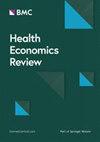Factors influencing medical expenditures in patients with unresolved facial palsy and pharmacoeconomic analysis of upper eyelid lid loading with gold and platinum weights compared to tarsorrhaphy
IF 2.7
3区 经济学
Q1 ECONOMICS
引用次数: 0
Abstract
There are no standards in diagnostic and therapeutic approaches to eye care in incomplete eyelid closure due to unresolved facial palsy (FP). Loading of the upper eyelid (UELL) with gold weights (GWs) or platinum chains (PCs) is a highly effective procedure for the correction of lagophthalmos. Despite this, the procedure is used infrequently in our country because of the relatively high price of the implant and the lack of reimbursement. The aim of this research was to assess the factors influencing medical expenditures in this group of patients and to analyze utility costs for the UELL procedure with the use of GW and PC compared to tarsorrhaphy. Material and methods The costs of 88 surgical procedures (40 GWs, 11 PCs and 37 tarsorrhaphies) and medical expenditures before and after surgery were calculated based on reporting of materials, staff salaries and the SF-36 questionnaire. Distribution quartiles of the cost per QALY measure (dependent variable) was assessed via an ordered logistic regression model with eight explanatory variables. Results The calculated total cost of the surgery was US$209 for tarsorrhaphy, US$758 for UELL with a GW and US$1,676 for UELL with a PC. Bootstrapped costs per QALY values (CUI) in 88% of cases were below the US$100,000 cutoff. Etiology and duration of facial palsy and presence of Bell’s phenomenon were factors that significantly influenced the CUI. Patient gender and age, history of previous eyelid surgery, and presence of corneal sensation were found to be not significant (p > 0.1). Calculated ICER for GW was US$1,241.74/1QALY and ICER for PC was US$13,181.05/1QALY compared to tarsorrhaphy. Conclusions Eye protection in patients with FP should be a crucial element of health policy. Findings suggest UELL procedure with a GW or a PC to be a cost-effective procedure with GW being the most cost-effective.影响未愈面瘫患者医疗支出的因素,以及上睑黄金和铂金砝码装载与跗关节成形术相比的药物经济学分析
对于因面瘫(FP)而导致眼睑闭合不全的患者,眼部护理的诊断和治疗方法尚无标准。用金砝码(GWs)或铂链(PCs)加载上眼睑(UELL)是矫正眼睑下垂的一种非常有效的方法。尽管如此,在我国,由于植入物的价格相对较高,而且缺乏报销机制,因此这种手术并不常用。本研究的目的是评估影响这部分患者医疗支出的因素,并分析使用 GW 和 PC 的 UELL 手术与跗关节成形术相比的实用成本。材料和方法 根据材料报告、员工工资和 SF-36 问卷,计算了 88 例手术(40 例 GW、11 例 PC 和 37 例 tarsorrhaphies)的费用以及手术前后的医疗支出。通过一个包含八个解释变量的有序逻辑回归模型,对每 QALY 衡量成本(因变量)的四分位数分布进行了评估。结果 计算出的手术总成本分别为:跗关节成形术 209 美元,带 GW 的 UELL 手术 758 美元,带 PC 的 UELL 手术 1676 美元。在 88% 的病例中,每 QALY 值的引导成本 (CUI) 低于 100,000 美元的临界值。面瘫的病因和持续时间以及是否存在贝尔现象是显著影响 CUI 的因素。患者性别和年龄、既往眼睑手术史以及角膜感觉的存在均无显著影响(P > 0.1)。与跗关节成形术相比,GW 的 ICER 为 1,241.74 美元/1QALY,PC 的 ICER 为 13,181.05 美元/1QALY。结论 FP 患者的眼睛保护应成为卫生政策的重要内容。研究结果表明,使用 GW 或 PC 进行 UELL 手术具有成本效益,其中 GW 的成本效益最高。
本文章由计算机程序翻译,如有差异,请以英文原文为准。
求助全文
约1分钟内获得全文
求助全文
来源期刊

Health Economics Review
Multiple-
CiteScore
3.90
自引率
4.20%
发文量
59
审稿时长
13 weeks
期刊介绍:
Health Economics Review is an international high-quality journal covering all fields of Health Economics. A broad range of theoretical contributions, empirical studies and analyses of health policy with a health economic focus will be considered for publication. Its scope includes macro- and microeconomics of health care financing, health insurance and reimbursement as well as health economic evaluation, health services research and health policy analysis. Further research topics are the individual and institutional aspects of health care management and the growing importance of health care in developing countries.
 求助内容:
求助内容: 应助结果提醒方式:
应助结果提醒方式:


